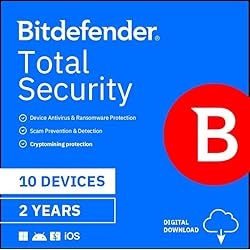The Debate Over Pre Installed Antivirus Software: What You Need to Know
With the debate over pre installed antivirus software intensifying among cybersecurity experts, consumers and small business owners alike face critical choices about how best to protect their devices. As cyber threats evolve rapidly, understanding whether built-in security solutions are enough—or if third-party antivirus programs are essential—can make all the difference between robust protection and unnecessary exposure to cyber risks.
Why Pre Installed Antivirus Software Matters
Modern operating systems increasingly come with some form of pre installed antivirus software. From Microsoft Defender on Windows to XProtect on macOS, these out-of-the-box solutions promise immediate security for users. However, many users wonder if these default options are sufficient, prompting a vigorous debate within the cybersecurity community. The stakes are high: sophisticated malware, ransomware, and phishing scams are growing in both frequency and complexity. Making the right cybersecurity choices can protect personal data, uphold business continuity, and prevent costly breaches.
—
Are Pre Installed Antivirus Programs Enough?
Pre installed antivirus software provides a basic layer of defense, but how well do these programs really perform against today’s threats?
Security Capabilities of Built-in Antivirus Solutions
Most pre installed antivirus software offers real-time protection, malware scanning, and automatic updates. For example, Microsoft Defender has made significant strides in recent years, earning high marks from independent testing labs for its malware detection abilities. macOS’s XProtect leverages built-in security mechanisms to guard against known threats.
Limitations and Gaps
Despite their advancements, built-in solutions may lack the depth and breadth of features offered by leading third-party antivirus suites. Features like advanced ransomware protection, parental controls, identity theft monitoring, and behavioral analysis are often only available through paid, standalone security suites. Additionally, pre installed options can sometimes lag behind in response to zero-day attacks or complex threats targeting specific industries or user profiles.
—
The Pros and Cons of Relying on Default Security
Before trusting your devices solely to pre installed antivirus software, it’s important to weigh the advantages and disadvantages.
Advantages of Pre Installed Antivirus Software
– Convenience: Security is enabled by default, requiring no installation or setup.
– System Integration: Built-in solutions are optimized for system performance and are less likely to cause compatibility issues.
– Cost-Effective: There are no additional expenses, making baseline protection accessible to all users.
– Low Maintenance: Automatic updates and seamless operation minimize user involvement.
Drawbacks and Concerns
– Limited Advanced Features: Pre installed software typically offers a standard feature set.
– Slower Response to Emerging Threats: Third-party vendors may offer faster updates and broader threat intelligence networks.
– Lack of Customization: Advanced users and businesses may need more sophisticated tools or policy controls.
– Potential Conflicts: Some users experience issues when installing third-party antivirus alongside pre installed software.
—
Choosing Between Pre Installed and Third-party Antivirus
For individual users, professionals, and small businesses, the decision hinges on specific needs, the nature of their data, and risk tolerance.
Key Considerations for Consumers
– Usage Habits: If you mostly browse trusted websites and practice safe computing, pre installed software may suffice.
– Data Sensitivity: If you store personal financial or health information, extra protection may provide peace of mind.
– Value-Added Features: Frequent travelers or families with children may benefit from features like VPNs and parental controls in third-party packages.
Key Considerations for Professionals and Small Businesses
– Compliance Requirements: Some industries require advanced security, logging, and reporting not provided by default tools.
– Endpoint Management: Businesses often need centralized management and response capabilities.
– Layered Security: A defense-in-depth approach—combining multiple security layers—can reduce risk.
—
Myths and Misconceptions About Pre Installed Antivirus
Many myths surround the debate over pre installed antivirus software, often leading to confusion:
– “Pre installed antivirus is always inferior.”
Not true—modern built-in programs are more capable than ever before.
– “Third-party software is always necessary.”
Not everyone needs advanced or specialized protection.
– “Running two antivirus programs offers double protection.”
In reality, this can cause conflicts, false positives, and system slowdown.
Understanding these misconceptions is crucial to making an informed decision for your cybersecurity strategy.
—
Frequently Asked Questions (FAQs)
Q1: Is pre installed antivirus software enough for most users?
A1: For basic users with safe browsing habits, pre installed antivirus may offer sufficient protection, but those with sensitive data or higher risk profiles may benefit from additional layers.
Q2: Can I use both pre installed and third-party antivirus at the same time?
A2: It’s generally not recommended, as running two antivirus programs can cause conflicts, reduce performance, and sometimes lower protection.
Q3: What features do third-party antivirus programs offer that built-in ones may lack?
A3: Advanced malware detection, anti-ransomware, identity theft protection, parental controls, firewalls, and dedicated customer support are often exclusive to third-party solutions.
Q4: Are pre installed antivirus solutions updated as frequently as third-party programs?
A4: Pre installed solutions are regularly updated, but third-party vendors may respond faster to new threats due to their broader threat intelligence networks.
Q5: How do I know if my pre installed antivirus is working?
A5: Most operating systems display security notifications and offer a security dashboard to check real-time protection and update status.
Q6: Is it safe to uninstall pre installed antivirus software?
A6: Uninstalling built-in antivirus exposes your system to greater risk unless an alternative protection is immediately installed and activated.
—
Summary and Final Takeaway
The debate over pre installed antivirus software reflects the ongoing evolution in cybersecurity. While today’s built-in solutions are more competent and convenient than ever, understanding their limitations and assessing your unique needs is essential. For many consumers, these default tools may be enough—but for professionals and small businesses handling sensitive data or adhering to industry regulations, supplementing with robust third-party security remains wise.
Practical Advice:
Regularly review your security settings and stay informed about new threats. Whether you rely on built-in or third-party antivirus, update your software promptly, practice safe computing habits, and consider a layered approach to security for the best protection in an increasingly hostile digital world.

